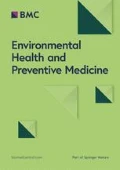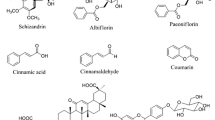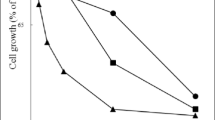Abstract
Objectives
Ketamine hydrochloride (KT) is a secondary amine that has been safely used as an injectable anesthetic and analgesic to avoid the production of nitroso compounds in the stomach. However, ketamine in the tablet form has recently become an abused, recreational drug. The aim of this study was to investigate the genotoxic effects of N-nitrosoketamine (NKT) and KT on the basis of an in vitro micronucleus (MN) test using a Chinese hamster lung fibroblast cell line (CHL/IU).
Methods
NKT was synthesized from KT in our laboratory. In the MN tests, CHL/IU cells were continuously treated with either NKT or KT for 24, 48, or 72 hours without the S9 mix. The cells were also treated with NKT or KT with or without the S9 mix for 6 hours, followed by a recovery period of 18, 42, or 66 hours (short-term treatment). The results were considered to be statistically significant when the p-values of both Fisher’s exact test and the trend test were less than 0.05.
Results
After the short-term treatment with either NKT or KT with and without the S9 mix, the frequency of micronuclei significantly increased. However, the frequency of micronuclei did not significantly increase after the continuous treatment with either NKT or KT. Both NKT and KT were determined to be genotoxic in the short-term treatment with or without the S9 mix, but they were determined to be nongenotoxic in continuous treatment.
Conclusion
Our findings suggest that NKT has a stronger genotoxic effect than KT.
Similar content being viewed by others
References
Lijinsky W. Reaction of drugs with nitrous acid as a source of carcinogenic nitrosamines. Cancer Res. 1974;34:255–258.
Raineri R, Poiley JA, Andrews AW, Pienta RJ, Lijinsky W. Greater effectiveness of hepatocyte and liver S9 preparations from hamsters than rat preparations in activating N-nitroso compounds to metabolites mutagenic to Salmonella. J Natl Cancer Inst. 1981;67:1117–1122.
Sen NP, Smith DC, Schwinghamer L. Formation of N-nitrosamines from secondary amines and nitrite in human and animal gastric juice. Food Cosmet Toxicol. 1969;7:301–307.
Cardesa A, Pour P, Althoff J, Mohr U. Vascular tumors in female mice after intraperitoneal injection of dimethylnitrosamine. J Natl Cancer Inst. 1973;51:201–208.
Druckrey H, Preussmann R, Ivankovic S, Schmahl D. Organotropic carcinogenic effects of 65 various N-nitrosocompounds on BD rats. Z Krebsforsch. 1967;69:103–201.
Magee PN, Barnes JM. The production of malignant primary hepatic tumours in the rat by feeding dimethylnitrosamine. Br J Cancer. 1956;10:114–122.
Toth B, Magee PN, Shubik P. Carcinogenesis study with dimethyl-nitrosamine administered orally to adult and subcutaneously to newborn BALB/C mice. Cancer Res. 1964; 64:1712–1721.
Dalgarno PJ, Shewan D. Illicit use of ketamine in Scotland. J Psychoactive Drugs. 1996;28:191–199.
Siegel RK. Phencyclidine and ketamine intoxication: a study of four populations of recreational users. NIDA Res Monogr. 1978;21:119–147.
Jansen KL. Ketamine—can chronic use impair memory? Int J Addict. 1990;25:133–139.
Kammaya H, Krishna PR. Ketamine addiction. Anesthesiology. 1987;67:861–862.
Hurt PH, Ritchie EC. A case of ketamine dependence. Am J Psychiatry. 1994;151:779.
Heddle JA, Hite M, Kirkhart B, Mavournin K, MacGregor JT, Newell GW, Salamone MF. The induction of micronuclei as a measure of genotoxicity. A report of the U.S. Environmental Protection Agency Gene-Tox Program. Mutat Res. 1983;123:61–118.
Matsushima T, Hayashi M, Matsuoka A, Ishidate M Jr, Miura KF, Shimizu H, Suzuki Y, Morimoto K, Ogura H, Mure K, Koshi K, Sohuni T. Validation study of the in vitro micronucleus test in a Chinese hamster lung cell line (CHL/IU). Mutagenesis. 1999;14:569–580.
Li J, Suzuki Y, Shimizu H, Fukumoto M, Okonogi H, Nagashima T, Ishikawa T. In vitro micronucleus assay of 30 chemicals in CHL cells. Jikeikai Med J. 1993;40:69–83.
Cochran WG. Some methods for strengthening the common 2 tests. Biometrics. 1954;10:417–451.
Armitage P. Test for linear trends in proportions and frequencies. Biometries. 1955;11:375–386.
Scott D, Galloway SM, Marshall RR, Ishidate M Jr, Brusick D, Ashby J, Myhr BC. International commission for protection against environmental mutagens and carcinogens. Genotoxicity under extreme culture conditions. A report from ICPEMC Task Group 9. Mutat Res. 1991;257:147–205.
Morel G, Ban M, Bonnet P, Zissu D, Brondeau MT. Effect of beta-naphthoflavone and phenobarbital on the nephrotoxicity of chlorotrifluoroethylene and 1,1-dichloro-2,2-difluoroethylene in the rat. J Appl Toxicol. 2005;25:153–165.
Garcia Franco S, Dominguez G, Pico JC. Alternatives in the induction and preparation of phenobarbital/naphthoflavoneinduced S9 and their activation profiles. Mutagenesis. 1999; 14:323–326.
Adhvaryu SG, Trivedi AH, Jani KH, Vyas RC, Dave BJ. Genotoxic effects of ketamine on CHO cells. Arch Toxicol. 1986;59:124–125.
Yanagihara Y, Kariya S, Ohtani M, Uchino K, Aoyama T, Yamamura Y, Iga T. Involvement of CYP2B6 in N-demethylation of ketamine in human liver microsomes. Drug Metab Dispos. 2001; 29:887–890.
Shimizu H, Takemura N, Ando H, Morita M, Machida K. Mutagenic activity of N-nitrosomethamphetamine and N-nitrosoephedrine. Cancer Lett. 1983;21:63–68.
Newbold RF, Warren W, Medcalf AS, Amos J. Mutagenicity of carcinogenic methylating agents is associated with a specific DNA modification. Nature. 1980;283:596–599.
Yanagihara Y, Ohtani M, Matsumoto M, Kariya S, Uchino K, Hiraishi T, Ashizawa N, Aoyama T, Yamamura Y, Iga T. Preparation of ketamine tablets for treatment of patients with neuropathic pain. Yakugaku Zasshi. 1999;119:980–987. (Article in Japanese)
Weiner AL, Vieira L, McKay CA, Bayer MJ. Ketamine abusers presenting to the emergency department: a case series. J Emerg Med. 2000;18:447–451.
Felser JM, Orban DJ. Dystonic reaction after ketamine abuse. Ann Emerg Med. 1982;11:673–675.
Dillman J. Ketamine abuse—a new edge. Todays Surg Nurse. 1998;20:37–39.
Jansen KL. Non-medical use of ketamine. BMJ. 1993;306:601–602.
Shewan D, Dalgarno P. Ecstasy and neurodegeneration. …such as ketamine. BMJ. 1996;313:424.
Katagi M, Tsutsumi H, Miki A, Nakajima K, Tsuchihashi H. Analyses of clandestine tablets of amphetamines and their related designer drugs encountered in recent Japan. Japanese Journal of Forensic Toxicology. 2002;20:303–319.
Makino Y, Tanaka S, Kurobane S, Nakauchi M, Terasaki T, Ohta S. Profiling of illegal amphetamine-type stimulant tablets in Japan. J Health Sci. 2003;49:129–137.
Kawaguchi T, Harada M, Arimatsu H, Nagata S, Koga Y, Kuwahara R, Hisamochi A, Hino T, Taniguchi E, Kumemura H, Hanada S, Maeyama M, Koga H, Tomiyasu N, Toyomasu H, Kawaguchi M, Kage M, Kumashiro R, Tanikawa K, Sata M. Severe hepatotoxicity associated with a N-nitrosofenfluramine-containing weight-loss supplement: report of three cases. J Gastroenterol Hepatol. 2004:19:349–350.
Ando H, Morita M. Possibility of in vitro and in vivo formations of N-nitrosomethamphetamine. Reports of National Research Institute of Police Science. 1983;36:16–20. (Article in Japanese)
Shimizu H, Takemura N, Ando H, Morita M, Machida K. The in vivo formation of mutagenic N-nitroso compounds from methamphetamine and ephedrine. Nippon Eiseigaku Zasshi. 1984;39:573–580. (Article in Japanese)
Eisenbrand G, Preussmann R, Schmahl D. Carcinogenicity of N-nitrosoephedrine in rats. Cancer Lett. 1978;5:103–106.
Wogan GN, Paglialunga S, Archer MC, Tannenbaum SR. Carcinogenicity of nitrosation products of ephedrine, sarcosine, folic acid, and creatinine. Cancer Res. 1975;35:1981–1984.
Author information
Authors and Affiliations
Corresponding author
Rights and permissions
About this article
Cite this article
Toyama, Y., Shimizu, H., Suzuki, Y. et al. Genotoxic effects of N-nitrosoketamine and ketamine as assessed by in vitro micronucleus test in Chinese hamster lung fibroblast cell line. Environ. Health Prev. Med. 11, 120–127 (2006). https://doi.org/10.1265/ehpm.11.120
Received:
Accepted:
Issue Date:
DOI: https://doi.org/10.1265/ehpm.11.120




